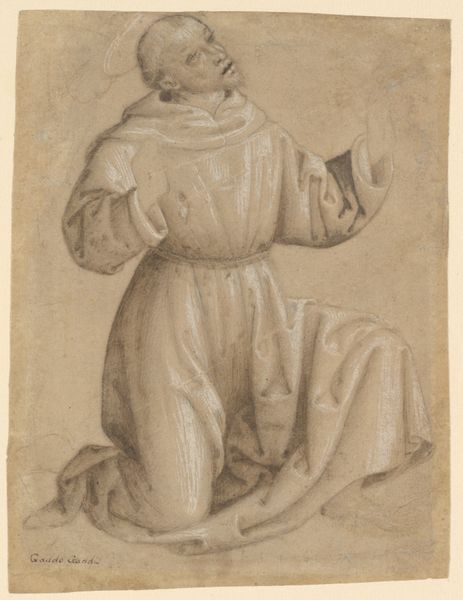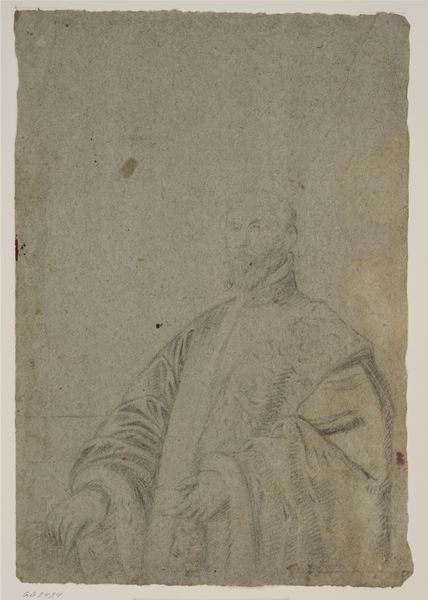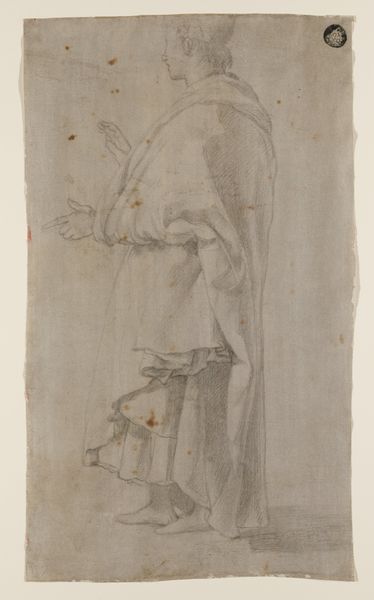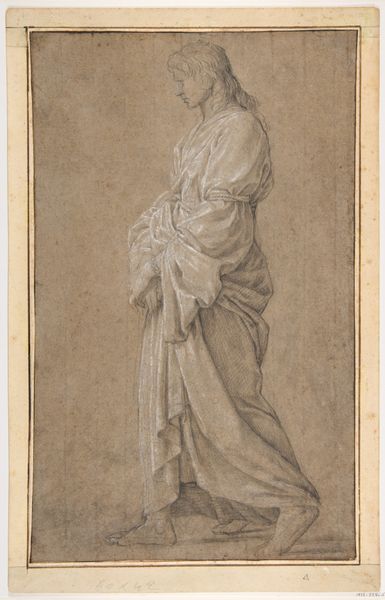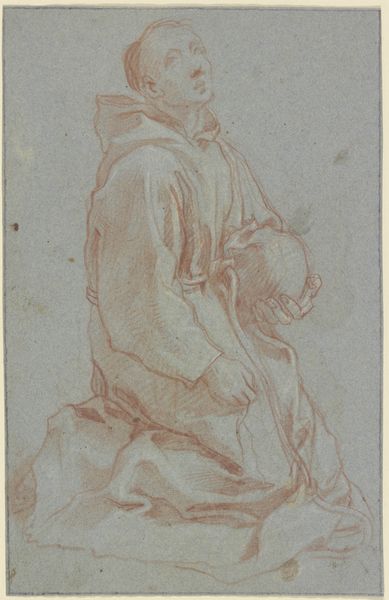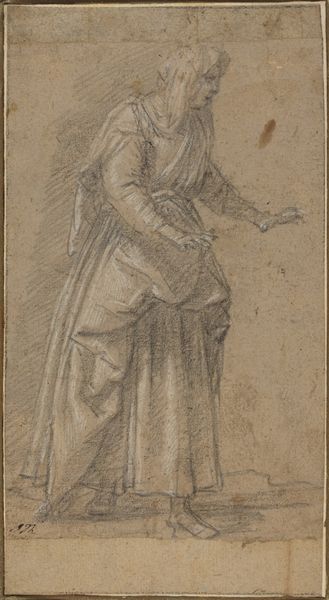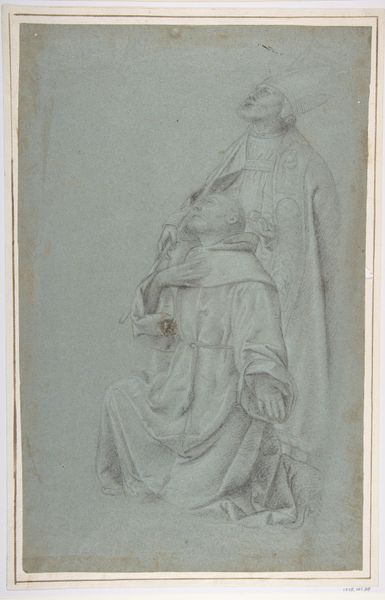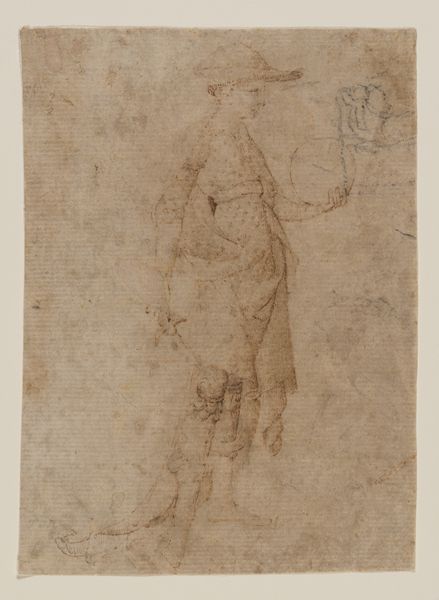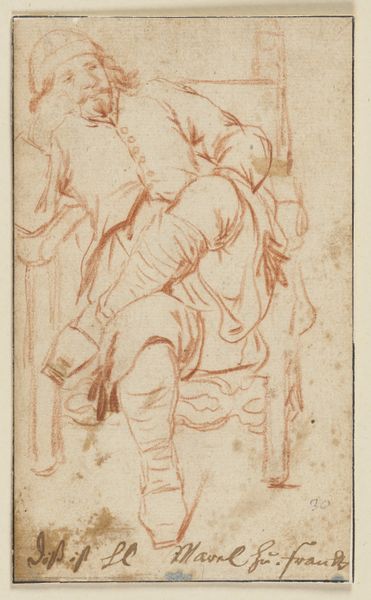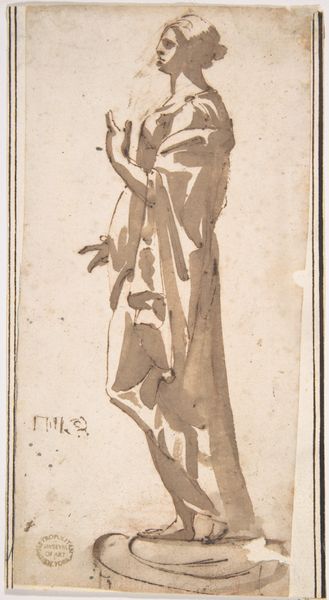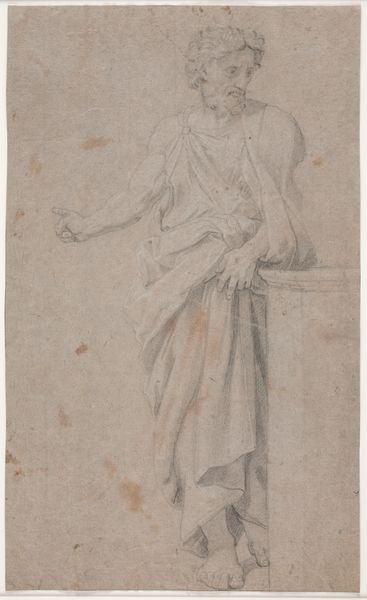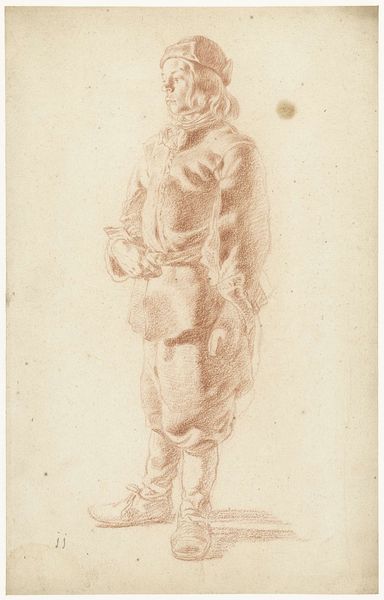
A Kneeling Man in Fifteenth-Century Costume (recto); a small, fragmentary sketch of a recumbant boy, probably by a later hand (verso) 1506 - 1512
0:00
0:00
drawing, paper, pencil
#
portrait
#
drawing
#
pencil sketch
#
figuration
#
paper
#
11_renaissance
#
pencil drawing
#
pencil
#
italian-renaissance
Dimensions: 6 x 4 in. (15.3 x 10.2 cm)
Copyright: Public Domain
Curator: We’re looking at a drawing by Pinturicchio titled "A Kneeling Man in Fifteenth-Century Costume," likely created between 1506 and 1512. It's rendered in pencil on paper. Editor: It's incredibly subtle, almost ghostlike. The gray paper and delicate pencil lines create a very soft, somber atmosphere. I notice the man's upturned gaze first. There is also what seems to be a different study of what might be a child on the back. Curator: Indeed, the verso contains a small fragmentary sketch that may be a later addition. However, turning our attention to the primary figure, notice how Pinturicchio utilizes line weight to create volume and dimension. The drapery, for instance, has these wonderful, sweeping lines that suggest a three-dimensionality despite the inherent flatness of the medium. Editor: Kneeling, in art, has always been a powerful signifier. From supplication to prayer, it conveys reverence, humility, or even defeat. His upturned face might speak of aspiration, devotion, or maybe even a yearning for something just beyond his grasp. Note how the emblem might show social status for the sitter as well. Curator: An astute observation. Moreover, the figure's posture is quite balanced. There's a clear distribution of weight, achieved through careful attention to anatomical structure and the interplay of light and shadow, giving it an interesting feeling of suspended motion. Also, if we analyze the structure of the drawing in total, there are distinct segments for head, torso, and legs creating a satisfying overall harmony. Editor: Beyond the immediate religious or social context, there's an enduring human element. We've all looked upwards in moments of hope or desperation, projecting our desires onto something larger than ourselves. In a way, it touches upon this collective visual memory. It captures a really timeless expression. Curator: Ultimately, Pinturicchio's drawing exemplifies Renaissance draftsmanship—a pursuit of realistic representation underscored by an inherent elegance of line and form. I admire the drawing's restrained quality. Editor: For me, this work serves as a window into not only a historical era but also the perpetual human drama of hope and longing.
Comments
No comments
Be the first to comment and join the conversation on the ultimate creative platform.
